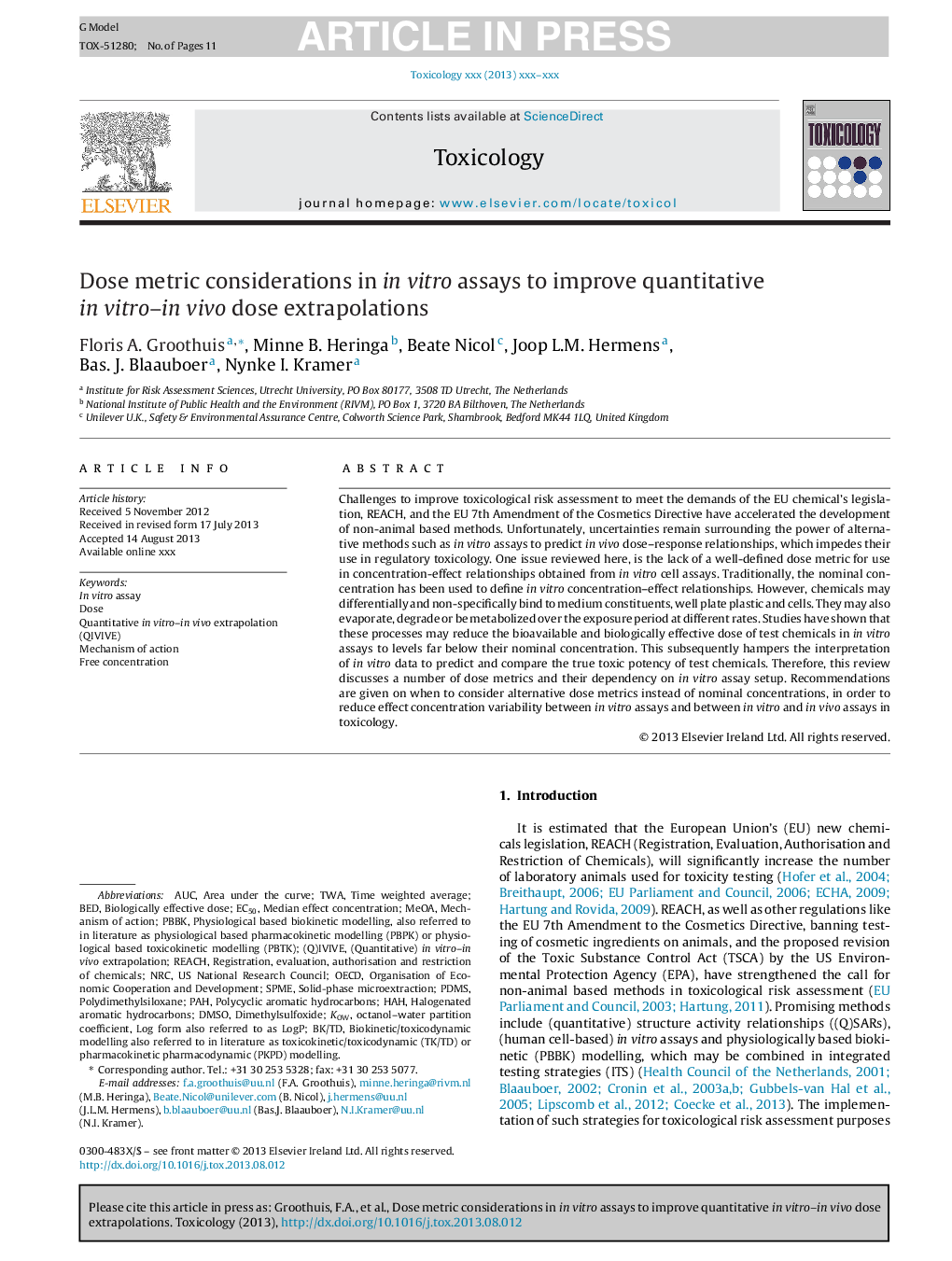| Article ID | Journal | Published Year | Pages | File Type |
|---|---|---|---|---|
| 5859087 | Toxicology | 2015 | 11 Pages |
Abstract
Challenges to improve toxicological risk assessment to meet the demands of the EU chemical's legislation, REACH, and the EU 7th Amendment of the Cosmetics Directive have accelerated the development of non-animal based methods. Unfortunately, uncertainties remain surrounding the power of alternative methods such as in vitro assays to predict in vivo dose-response relationships, which impedes their use in regulatory toxicology. One issue reviewed here, is the lack of a well-defined dose metric for use in concentration-effect relationships obtained from in vitro cell assays. Traditionally, the nominal concentration has been used to define in vitro concentration-effect relationships. However, chemicals may differentially and non-specifically bind to medium constituents, well plate plastic and cells. They may also evaporate, degrade or be metabolized over the exposure period at different rates. Studies have shown that these processes may reduce the bioavailable and biologically effective dose of test chemicals in in vitro assays to levels far below their nominal concentration. This subsequently hampers the interpretation of in vitro data to predict and compare the true toxic potency of test chemicals. Therefore, this review discusses a number of dose metrics and their dependency on in vitro assay setup. Recommendations are given on when to consider alternative dose metrics instead of nominal concentrations, in order to reduce effect concentration variability between in vitro assays and between in vitro and in vivo assays in toxicology.
Keywords
median effect concentrationPBBKOrganisation of Economic Cooperation and DevelopmentOECDSPMETWAHAHEC50NRCPAHPDMSAUCDMSOIn vitro assayBEDsolid-phase microextractionRegistration, Evaluation, Authorisation and Restriction of ChemicalsDoseBiologically effective doseDimethylsulfoxideREACHFree concentrationarea under the curveMechanism of actionTime weighted averagePolycyclic aromatic hydrocarbonsHalogenated aromatic hydrocarbonsPolydimethylsiloxaneKow
Related Topics
Life Sciences
Environmental Science
Health, Toxicology and Mutagenesis
Authors
Floris A. Groothuis, Minne B. Heringa, Beate Nicol, Joop L.M. Hermens, Bas. J. Blaauboer, Nynke I. Kramer,
